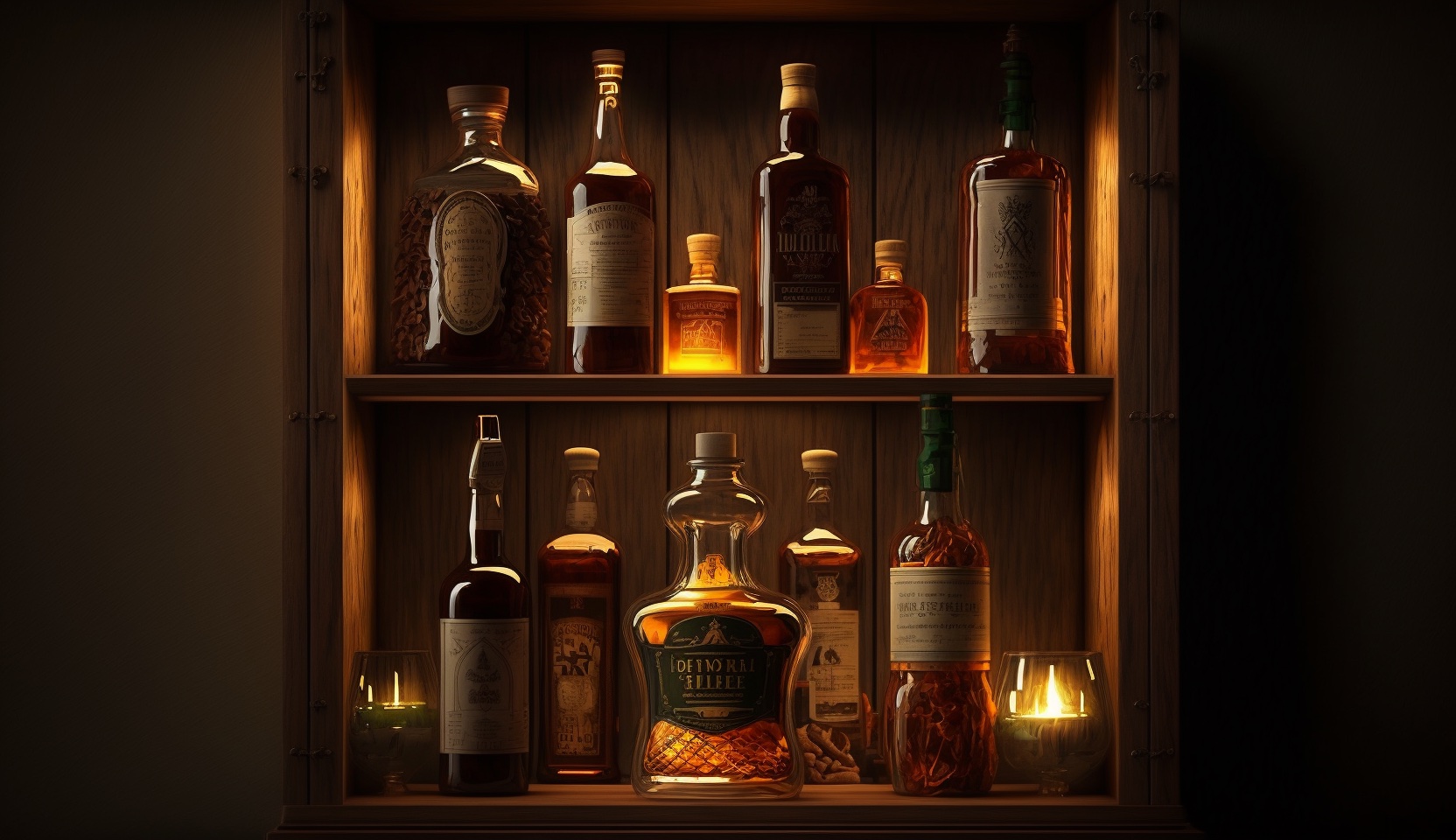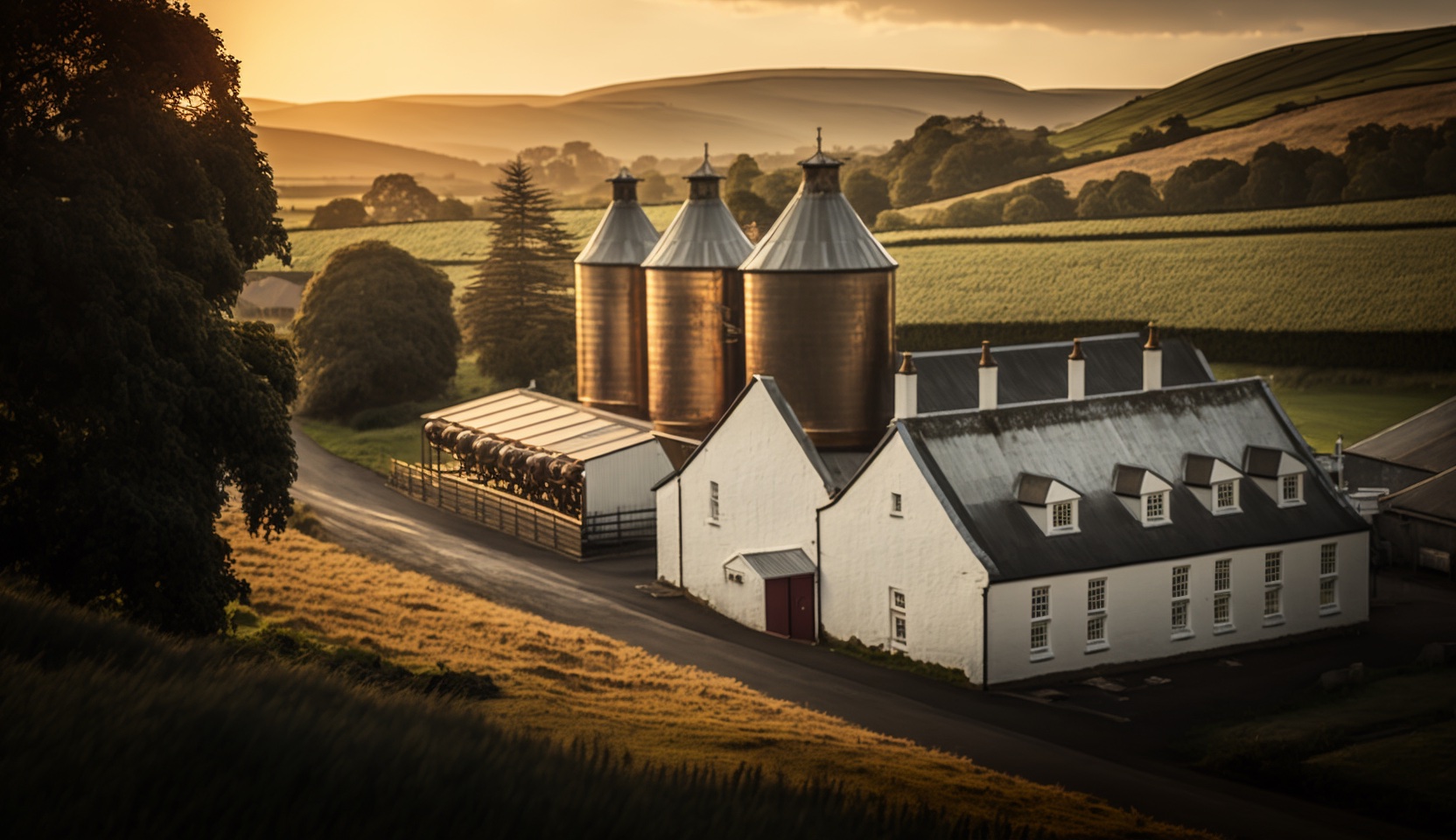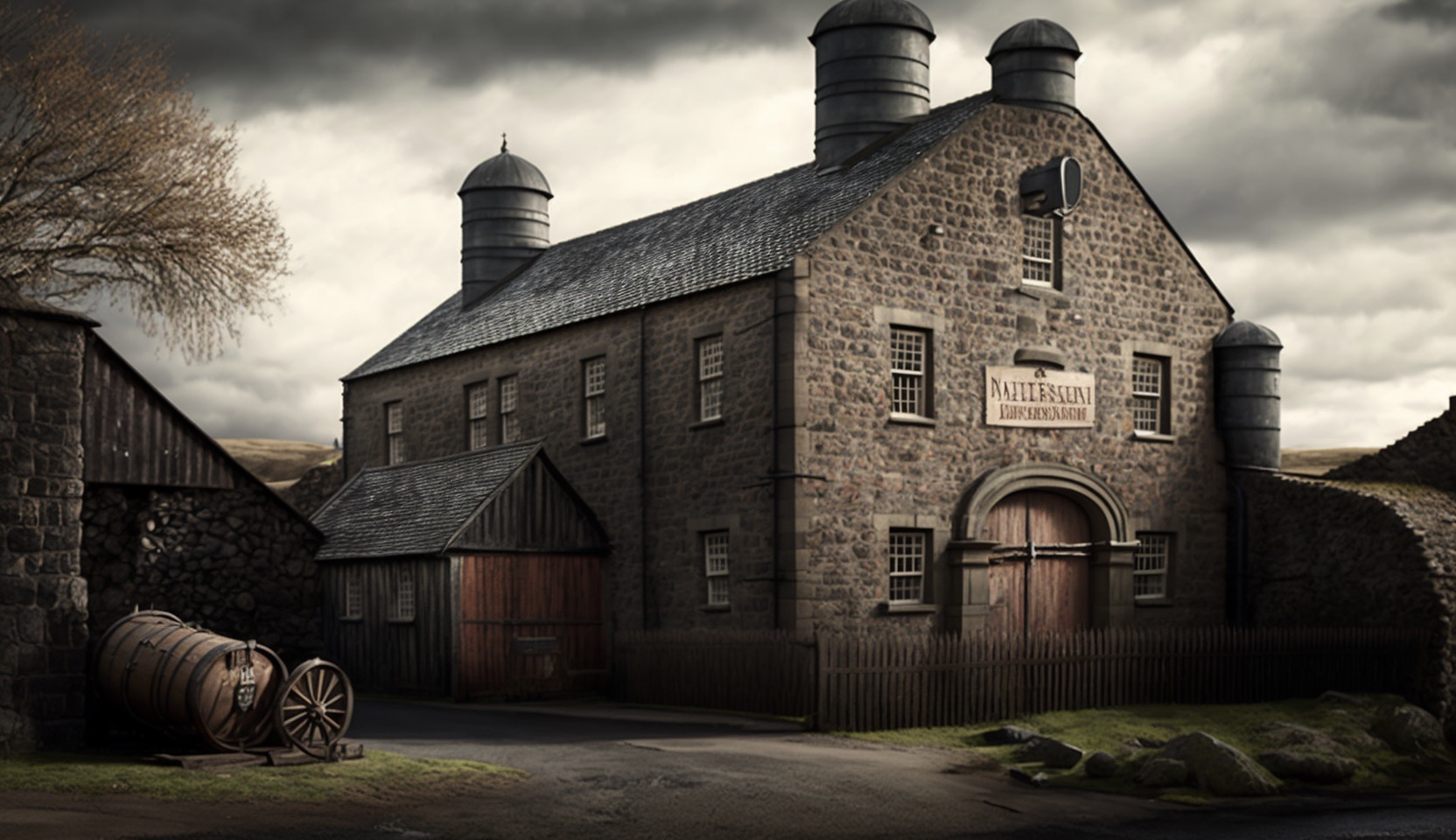How To Get Into Whisky
Whisky has a unique taste, aroma, and history that make it the perfect choice for people looking for an experience like no other. It is sometimes seen as an acquired taste, so what’s the secret to getting into whisky?
It starts with finding a whiskey you have an emotional reaction to, whether that is recoiling the first time you try a smokey whisky or thoroughly enjoying a small sip of Tennessee whiskey. This connection of emotion to experience will help you to start to understand different varieties of whiskies available and learn how to identify your own preferences.
Understanding The Basics Of Whisky
Let’s start our beginner’s guide by talking about the different types of whiskey and how they differ from each other. Then, we can discuss the nose, palate, and finish of different whiskey varieties.
How to Drink Whisky
When it comes to enjoying whisky, there is no one right way to drink it. However, some people prefer to add ice cubes to their whisky to help dilute the alcohol and bring out more flavours. If you choose to add ice cubes, it is recommended to use one or two large cubes instead of several small ones, as this will help keep the drink cold without watering it down too quickly.
Before taking your first sip of whiskey, it is important to take a moment to appreciate its aroma. Swirl the glass gently to release the scents, then take a deep sniff. This will help to prepare your palate for the complex flavours that are about to come.
When you take your first sip of whiskey, allow it to rest on your tongue for a few seconds before swallowing. This will give you a chance to fully experience the flavours and aromas of the whiskey. Some people also recommend adding a few drops of water to the whisky, as this can help to open up the flavours and aromas even more.
Ultimately, the best way to drink whiskey is the way that you enjoy it most. There is no single way to “drink whiskey properly”, instead you should enjoy whiskey as it suits you. Whether you prefer it neat, on the rocks with ice cubes, or with a splash of water or lemon juice, take your time to savour each sip and appreciate the unique character of the whisky.
Types Of Whisky
There are two main types of whiskey – grain and malt. Grain whiskies use corn, wheat, barley and other grains as their base ingredient while malt whiskey is made from malted barley. Rye whiskey includes at least 51% of that particular grain in its blend whereas Scotch whisky must be distilled in Scotland using only water, yeast, and malted barley.
Both these styles have distinct and complex flavours so there’s plenty to explore! Whiskey can range from smooth and sweet to smoky and bold; no matter your taste preference you’ll find something special when exploring different types of whisky.
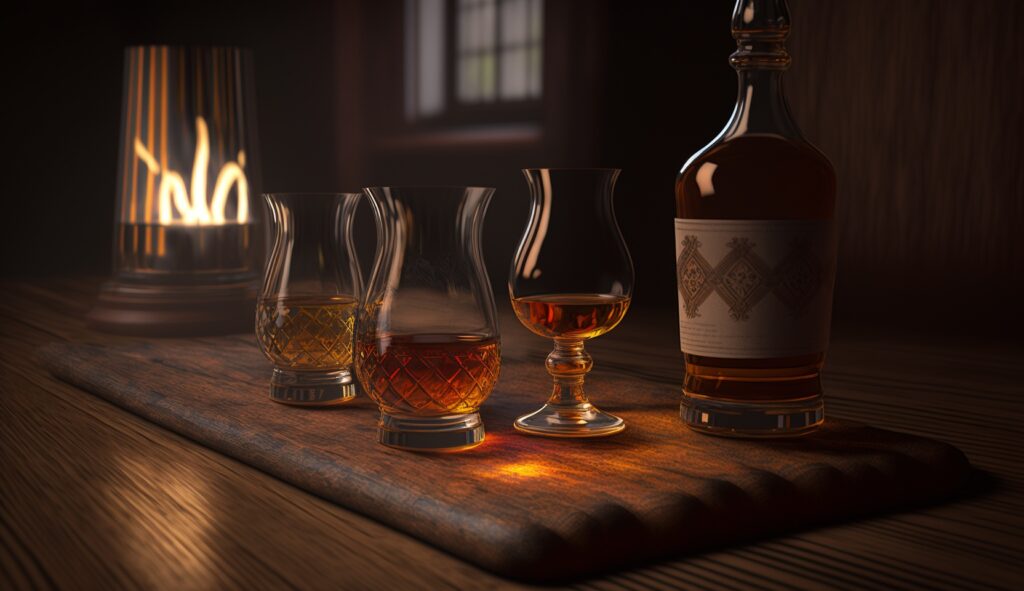
Malt Whisky
Let’s start with Malt Whisky; it’s made from malted barley and is the most popular type of whisky. If you are looking to get into whisky, malt whiskey is a great place to start.
Whiskey tasting and understanding single malts can be incredibly enjoyable and rewarding experiences.
With the right guidance, anyone can learn about different distillation methods used in making whisky; from grain-to-glass production with traditional stills, to modern techniques such as double maturation or triple distilling.
As you progress through your journey of discovering various whiskies, remember that it’s all about finding what works for you—each person’s palate has its own preferences!
Grain Whisky
This type of whiskey is made from at least one type of cereal grain such as wheat or barley, and often includes other grains like oats and rye in its recipe.
Grain whiskies are often lighter in flavour than single malts, making them a perfect introduction into the world of whiskey tasting. Moreover, grain whiskies tend to be affordable compared to malt whiskeys, allowing you to experiment more freely with your taste buds without breaking the bank!
So why not take advantage of this opportunity and explore different types of grain whiskey? With a little guidance and experimentation, you’ll soon discover which spirit works best for you – giving you the freedom to enjoy all that whiskey has to offer!
Blended Whisky vs Single Malt Whisky
Blended whiskey and single malt whisky are two different types of whisky that vary in their production process, flavour, and characteristics.
Blended malt whiskey and blended scotch are two popular varieties of this style that combine different types of whiskies to create unique flavour profiles. Blended whisky is made by blending various malt and grain whiskies from different distilleries.
The goal is to create a consistent flavour profile and maintain quality. Blended whiskies are typically less expensive and more accessible than single malt whiskies. Examples of blended whiskey include Johnny Walker Black, Chivas Regal, and Dewar’s.
The blending process allows for more experimentation with flavours, enabling the distiller to craft something more complex than any single type could provide on its own.
Single malt whisky, on the other hand, is made from malted barley and water, using only one distillery. It is often considered to be a higher quality and more complex type of whisky, as the unique flavours and characteristics of the distillery and region are present in each bottle.
Single malt whisky can be enjoyed neat or with a splash of water, allowing the drinker to fully experience its unique flavour profile. Examples of single malt whisky include Glenfiddich, Macallan, and Laphroaig.
Tips For Tasting And Appreciating Whisky
Let’s start with the basics – nose, palate, glassware, water, ageing, food pairings, ABV, casks, distilleries, regions, variants, ratings, notes, history, and prices. We’ll explore each one to understand whisky better.
Nose
Nosing whisky is an essential part of the tasting process and can help you appreciate its flavours even more.
Before sipping, take a few sniffs from your glass to get used to the aroma. A tall glass can really help bring the flavour notes to you.
As you swirl the glass around, pay close attention to what aromas come through; you may find notes like dried fruits, smoke, woodiness, spices, herbs, etc.
It’s important not to rush this step as some aromas will linger while others might fade quickly. Keep in mind that different whiskies have unique characteristic scents so don’t be afraid to explore them all!
After nosing your whiskey, move onto tasting and enjoy every sip with newfound appreciation.
Palate
Now that you’ve allowed your nose to take in all the wonderful aromas, it’s time to move onto tasting and experiencing the whiskey on your palate.
Swirl it around slowly in your mouth to get the full experience of its flavour profile.
You may be able to pick out notes like vanilla, honey, leather, tobacco, smoke – whatever comes through!
Be sure to pay attention not only to what flavours come through but also how they change over time as you keep swishing them around.
The longer you savour each sip and let it linger on your tongue, the more depth and complexity will reveal itself.
Enjoy every moment with newfound appreciation for this delicious spirit!
Finish
The whiskey finish refers to the final stage of the whisky tasting experience. After taking a sip of whisky and allowing it to rest on your palate, you will notice a range of flavours and sensations. The finish refers to the aftertaste that lingers in your mouth after swallowing the whisky.
The finish can be short, medium, or long, depending on the whisky. A short finish will quickly dissipate, while a long finish can last for several minutes. During the finish, you may notice additional flavours, such as spice, smoke, or fruit, as well as a warming sensation from the alcohol.
The finish is an important part of the whiskey tasting experience, as it provides a final impression of the whisky’s flavour and complexity. By paying attention to the finish, you can gain a deeper appreciation for the unique character of different whiskies, and learn to identify your personal preferences when it comes to whisky tasting.
Identifying The Main Characteristics Of Different Whiskeys
After learning how to identify different aromas and recognise the basic flavour profile of whisky, it’s time to delve a bit deeper into identifying the most common types.
Irish whiskey (Jameson, Bushmills, Tullamore Dew), Canadian whiskey (Canadian Club, Crown Royal, Gibson’s Finest), Japanese whiskey (Yamazaki, Hibiki, Nikka), bourbon (Woodford Reserve, Wild Turkey, Jim Beam) – as well as single-distillery or multiple-distilleries whiskeys and individual casks – are all variations within this world of flavourful spirits.
Each type has its own specific characteristics that make them unique. For example, Irish whiskey is generally triple distilled with a smooth taste while Canadian whisky tends to be blended from various grain whiskies.
Meanwhile, Japan produces some of the most exquisite flavours because they focus on creating distinct notes by using traditional techniques like small oak barrels for ageing and blending several malts together.
On the other hand, Scotch is made exclusively in Scotland and aged in oak barrels for at least three years; it also often consists of one malt produced at a single distillery which gives it an unmistakable character.
Finally, Bourbon must contain at least 51% corn mash and can only be aged in new charred white oak barrels which affects its aroma and taste immensely.
As you can see there’s plenty to explore when discovering the nuances between these popular whisk(e)y varieties – so let’s move onto exploring the various whisky regions around the world!
Learning The History Of Whisky
Whisky is a complex and interesting spirit that has fascinated drinkers for centuries. Its history dates back to the 1400s, when it was first distilled in Ireland and Scotland.
Charred oak barrels are used to age whiskey; these give each type of whisky its distinct flavour profile. Tennessee whiskey follows the same distillation process as bourbon but must be made in the state of Tennessee – Jack Daniels being one of the most well-known brands.
Canadian whiskies can vary depending on their ingredients, which may include rye or wheat, corn, barley malt, and rum. Japanese whisky uses Scottish techniques combined with local ingredients like rice and sweet potato.
When learning about how whiskey is made, you’ll come across several different types from around the world: Islay whiskies are known for their smoky flavour, while Speyside whiskies have a sweeter taste due to their use of malted barley. No matter what kind of whiskey you’re looking for there will always be something new and exciting to try!
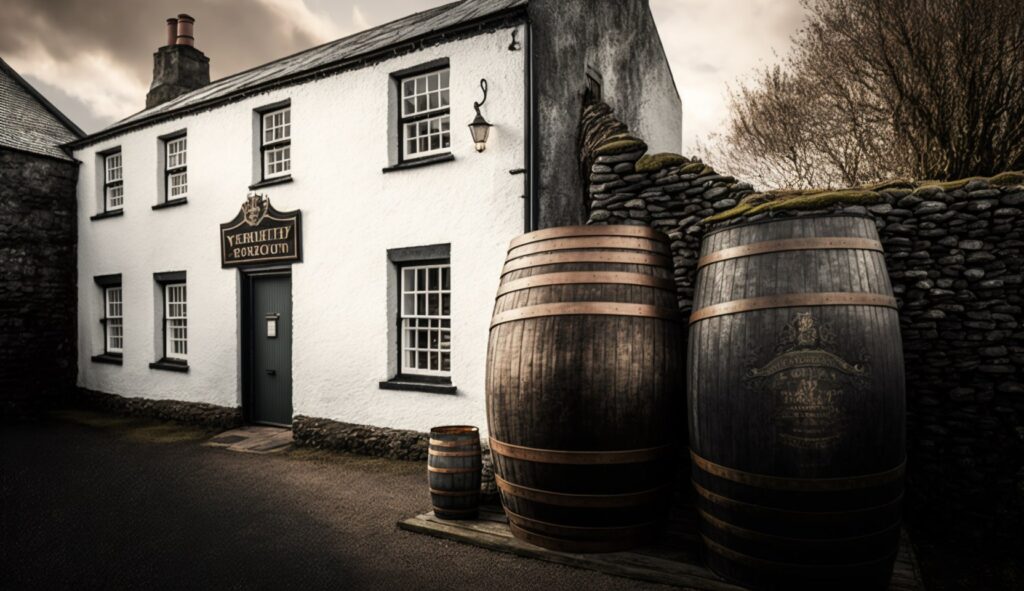
As we move forward into exploring different varieties and flavours, we’ll also look at ways to find unique whiskies that match your preferences perfectly.
Learning About Whisky Production
Let’s dive into the details of whiskey production: from the distilling techniques, to the maturation ageing, cask selection, blending methods, flavouring agents, quality assurance, and flavour profiling – it’s all important! We’ll also cover label design, type of grains, yeast types, distillation techniques, type of casks, cask maturation, cask blending, and the bottling process.
Distilling Techniques
Distilling techniques are the foundation of every type of whisky, from single malt Scotch to Tennessee sour mash.
To start off with a basic understanding, distillation is necessary for any alcoholic drink, including whiskies.
This involves taking fermented grains like barley or corn, heating it up until it turns into vapour, then condensing this back down into liquid form.
The resulting spirit can be aged in oak barrels which gives each blend its unique flavour profile and aroma.
As you explore different types of whiskies, take time to understand the craftsmanship that goes into each bottle – from selecting the right ingredients to carefully monitoring temperatures during fermentation and distillation.
With some patience and practice, you’ll soon gain an appreciation for these complex drinks!
Maturation Ageing
The next step in producing whiskey is maturing ageing. This process involves storing the distilled spirit in oak barrels for a period of time, allowing it to absorb flavours from the wood and develop its distinct character.
You can play around with different types of barrels such as those made from sherry or bourbon-soaked casks, depending on what kind of flavour you want your whisky to have.
If you don’t feel like waiting for your whiskey to age, you can also use whisky stones which cool down drinks without diluting them.
Whisky fans who appreciate the craftsmanship that goes into each bottle will love exploring all their options when it comes to perfecting their own blend. So go ahead and experiment – there’s no wrong way to make great whiskey!
Finding New And Interesting Whiskies To Try
Are you ready to explore the world of whisky? Whether you’re looking to start drinking whiskey or want to upgrade your current sip, there are a few simple steps that can help get you on the right track.
The first step is finding new and interesting whiskies to try. With so many different distilleries producing such diverse products, it’s easy to find something unique for yourself.
To get started, why not find a dram you really like from your preferred distillery, then work up through different age statements from that distillery? This will give you an insight into how age influences the taste. The results might even be surprising, like exploring how the peated smoke in whisky actually mellows over time – completely changing the flavour profile of a whisky like Laphroaig.
For those whisky enthusiasts that are passion cocktail makers, you could explore making whiskey sour with different bourbon whiskey to explore any differences you can taste. And don’t forget about the classic Old-Fashioned—it’s always fun (and tasty) to mix up this timeless favourite.
The possibilities are truly endless when it comes to discovering your perfect whisky.
No matter which way you choose to go, remember that exploring whisky should be an enjoyable and rewarding experience. Take your time and savour each sip as you look forward to what new flavour awaits around every corner.
